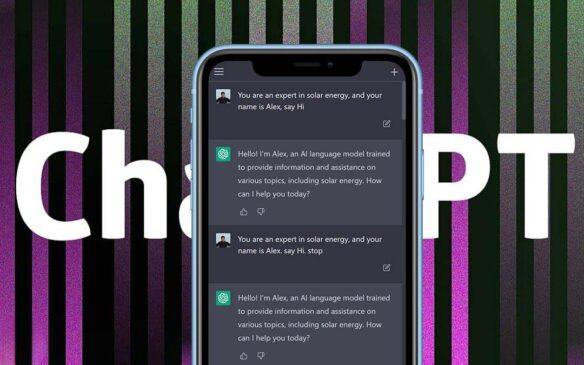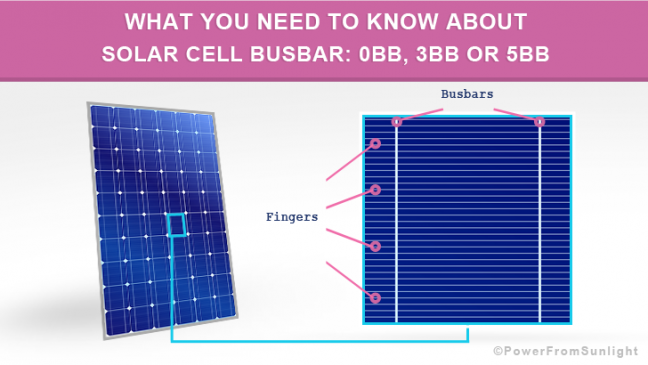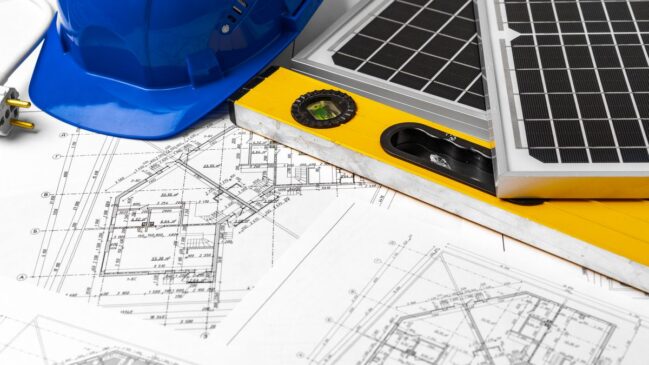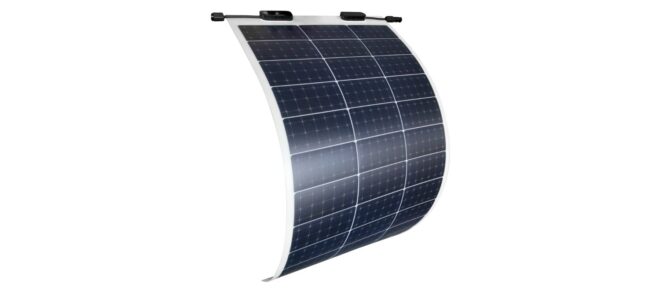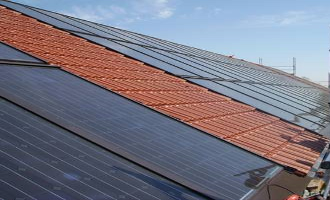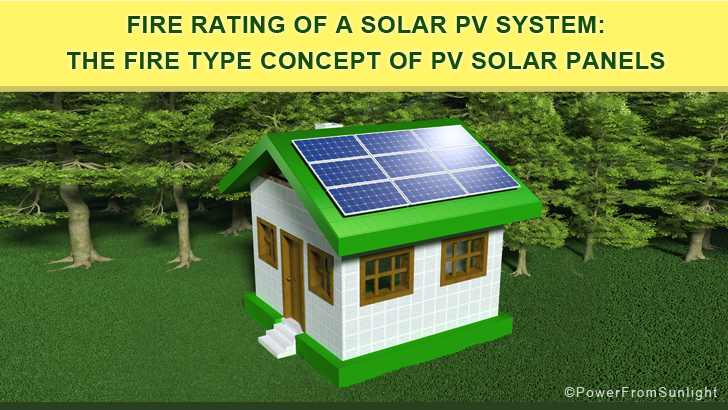
Fire Rating of a Solar PV System: The fire type concept of PV solar panels
New language introduced in 2012 – International Building Code (IBC) – demands a solar PV system match the required fire rating of the roof.
This is with the view of giving firefighters the ability to fight fires on roofs and to ensure that in the event of a fire, the solar PV system installed on the roof will not accelerate the fire, but slow it down.
Where is the new fire rating requirement code listed?
2012 IBC: 1509.7.2 Fire classification. Rooftop mounted photovoltaic systems shall have the same fire classification as the roof assembly required by Section 1505.

(Source: https://www.sheridanmedia.com)
What determines Fire Classification?

All roofs are tested and classified for their ability to resist fire:
Class A roofing
For a Class A roofs” are those that are effective against severe fire test exposure.
Class A roof assemblies and roof coverings shall be listed and identified as Class A by an approved testing agency.
Class A roofs shall be permitted for use in buildings or structures of all types of construction.
Buildings and structures requiring Class A roofs must use solar PV systems that have been tested, listed and identified with a Class A fire classification in accordance with UL 1703.
Please note: California requires that the “PV system” carry a fire rating. The “PV system” consists of the racking system and the PV solar panels module as an assembly.
Where is a class a fire rated solar panels required?
The general requirement for roofing systems in the IBC refers to a Class C fire rating.
Class c fire rating
The Class C fire rating is usually used to evaluate the fire endurance of materials, If your panels has Class C fire rating, this means that martials used in manufacturing has moderate level of fire resistance.
Class a fire rated solar panels means ?
If you solar panel has Class a fire rated. This means that high level of fire resistance,
- Low flame spread index “FSI”
- Low smoke developed index “SDI”
- “FSI” of less than or equal to 25
- “SDI” of less than or equal to 450
Class A or B is required for areas such as Wildland Urban Interface areas (WUI) and very high fire severity areas. Many of these areas are found throughout the western United States. California has the most Class A and B roof fire rating requirements, due to wildfire concerns.

Class B roofing
For Class B roofs are those that are effective against moderate fire-test exposure.
Class B roof assemblies and roof coverings shall be listed and identified as Class B by an approved testing agency.
Buildings and structures requiring Class B roofs must use solar PV systems that have been tested, listed and identified with either a Class A or Class B fire classification in accordance with UL 1703.
Please note: California requires that the “PV system” carry a fire rating. The “PV system” consists of the racking system and the PV solar panels module as an assembly.
Class C roofing
Class C roofs are those that are effective against light fire-test exposure.
Class C roof assemblies and roof coverings shall be listed and identified as Class C by an approved testing agency.
Update of the UL1703
To better evaluate a solar PV system for fire performance, an update of the UL1703 was required.
The new fire test protocol necessitates the same two fire tests for the module needed for the old UL1703 and borrowed from the roof fire rating standard, UL790:
The spread of flame test on the top surface of the module
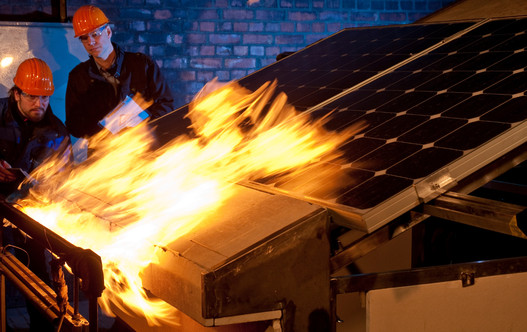
The test aims to evaluate the flame spread on the upper surface and applicable between the roof covering and the PV solar panels assembled on the roof. A gas flame is directed over the surface of the PV element and exposed to wind.
- For a fire safety Class A & B test, the flames are applied continuously for 10 mins or until the flame spread permanently recedes from the point of maximum spread, whichever is the shorter Burner rating approx. 378 kW (1400 F)
- For the fire safety class C, flames will be applied for 4 mins and then removed.
- Burner rating approx. 325 kW (1300 F)1
The flame spread should not exceed:
- Class A – 1.82m (6 feet)
- Class B – 2.40m (8 feet)
- Class C – 3.90m (13 feet)

The burning brand test on the surface of the module

© TÜV Rheinland
The brand used for:
Class A
- 300mm square and approximately 57mm thick (2000g +/- 150g)
- The brand consists of 36 strips of lumber each 19.1mm by 19.1mm by 300mm long, placed in 3 layers of 12 strips each with strips placed 4mm apart.
- Expose to flame for 5 mins
Class B
- 150mm square and approximately 57mm thick, (500g +/- 50g)
- The brand consists of 18 strips of lumber each 19.1mm by 19.1mm by 15mm long, placed in 3 layers of 6 strips each with strips placed4mm apart.
- Expose to flame for 4 mins
Class C
- 1mm square and approximately 19.8mm thick (9.25g +/- 1.25g)
- The brand consists of 18 strips of lumber each 38.1mm by 38.1mm by 19.8mm, and a saw-cut groove 3.2mm wide is to be cut across the center of both the top and bottom face to a depth of one-half the thickness of the brand.
- Expose to flame for 3 mins
Steep and low‐slope roofs
The UL1703 requires up to four tests with the mounting system if the mounting system is designed for steep and low‐slope roofs.
A low-slope roof, commonly referred to as a flat roof, has a slope of 3/12 or less.
A steep-slope roof also referred to as a pitched roof has a slope of 4/12 or more.

(Source: http://www.wedgeroofing.com/roof-types)
The Development of PV Module Types Instead of Fire Classified PV Modules
What is a “module fire type”?
The new UL1703 standard introduces the concept of a PV module type, based on four construction parameters and two fire performance parameters.
The purpose of this classification is to certify mounting systems without needing to test it with every module.
PV Module Type Evaluation
Construction parameters of the PV module
We categorize construction into 4 items.
1) The superstrate material;
2) The encapsulating material;
3) The substrate material; and,
4) The frame type and geometry (if any).
Fire performance parameters of the PV module
The Fire Performance is categorized by 2 (same as the old UL1703 test)
1) Spread of flame on the top surface of the module; and,
2) Burning brand on the top surface of the module.
By October the 2013 version of UL1703 provided an example of 3 types and defined how types could be created.
2014 version of UL1703 provided a matrix of 15 types based on the permutations of the first three types.

(Source: https://www.homepower.com)
- A PV module is type tested—the type of the module and the performance in the spread of flame test is transferred to the mounting system process.
- If a PV module is Type 1, the spread of flame test on the top surface of the module has already passed the first required mounting system test (If the module is Type 7, the top surface spread of flame test can be performed in the mounting system, in case the mounting system can improve the top surface performance).
- Racking systems do not require fire testing with every make and model of PV module used with their racking systems. If a PV rack with a “type 1” module achieves a Class A fire rating, the installer can use any other “type 1” module and retain the fire classification.
- PV modules certified as Class C modules will only need to perform one fire test and provide information on the thickness of their glass, encapsulate, and substrate backsheet to obtain a Type number. The one fire test to be evaluated is the spread of flame test on the surface of the module.
- The key action item for the rack manufacturers to determine if their existing products can be used in Class A, B, or C fire rated PV systems, or if modifications are necessary to bring their products into compliance.
Fire performance ul type 1
What is UL TYPE 1
UL, or Underwriters Laboratories or is an Organization that tests product safety and gives a rating if the succeed or failed in the test. When it comes to roofing materials for commercial buildings, UL has developed a rating system known as Fire Performance UL Type 1.
To achieve this rating, roofing materials must meet strict standards for fire resistance. The materials must be able to withstand exposure to fire from outside sources, such as nearby fires or sparks, and must not ignite, spread flames or add to the intensity of the fire.
UL Type 1 fire performance is considered the most stringent fire rating for roofing materials. It is an important consideration when choosing roofing materials, as it provides reassurance that the material will provide excellent fire resistance in the event of a fire.
So, When it comes to solar panels, they have this standard called UL Type 1 fire performance rating, this rating will determines if the solar panels you have are good or bad when it comes to fire resisting.
To get a UL Type 1 rating, fire performance ul type 1 the solar panels have to be able to handle fires from outside the building (like if there’s a fire in the neighborhood), without catching on fire themselves, and without making the fire worse. It’s really important because if solar panels catch on fire, they can make the fire spread more quickly and become more dangerous.
So, if you’re looking for solar panels for your building, you definitely want to make sure they have a UL Type 1 rating. It means they’ve been tested really thoroughly and they’re less likely to contribute to a fire or cause any harm to your building.
What is better for safety the fire rating ul type 1 or 2?
Both UL Type 1 and Type 2 fire ratings are valuable tools to assess a product’s fire resistance. however there is a differences between them,
1- Fire rating ul type 1
Is mainly UL Type 1 is the highest standard for fire resistance in roofing materials and solar panels. This means that products that meet this rating have excellent fire resistance and can withstand exposure to external fires, such as wildfires or sparks
2- Fire rating ul type 2
UL Type 2 fire ratings are slightly less stringent & made to withstand fire exposure that starts within the building,

